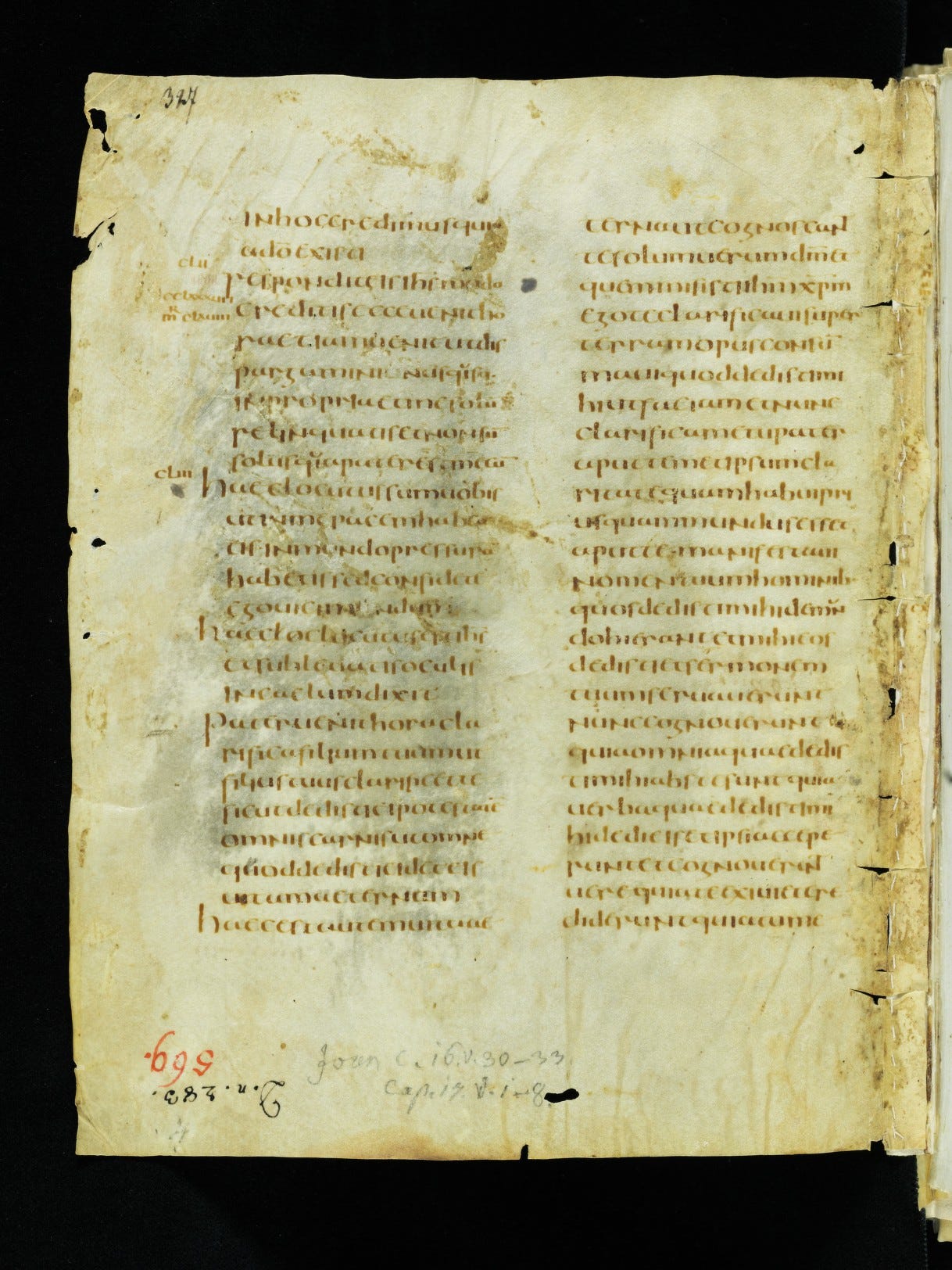The oldest fragment of the Vulgate Gospels
The earliest surviving copy of St Jerome's Vulgate version of the Gospels is a manuscript produced in Italy (perhaps in Verona) in about 410-420 AD, now in St Gallen, Stiftsbibliothek, Cod. Sang. 1395.
The following leaf contains the text of John 16:30 - 17:8.

Of this fragment, M.B. Parkes says:
"The oldest known method of presenting a text, found as early…
Keep reading with a 7-day free trial
Subscribe to Biblonia to keep reading this post and get 7 days of free access to the full post archives.

